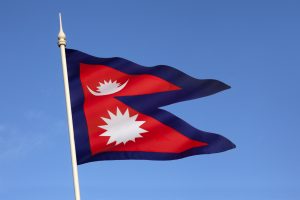A key party pulled out of Nepal’s ruling coalition on Monday, forcing the prime minister to seek a vote of confidence in Parliament.
Communist Party of Nepal–Unified Marxist Leninist (CPN-UML), the biggest party in Prime Minister Pushpa Kamal Dahal’s coalition, was angered by his decision to back an opposition candidate in next week’s presidential election.
Political turmoil and frequent changes in government are nothing new in Nepal, where eight different governments have ruled in the past 10 years.
It was not clear if Dahal would manage to stay in power. The constitution says he would have to seek a vote of confidence within a month to secure support of the majority of the 275 members in the House of Representatives, the lower chamber of Parliament.
Dahal recently got the backing of the Nepali Congress party, the largest group in Parliament, after agreeing to back their candidate for president. Ram Chandra Poudel of Nepali Congress party is supported by Prime Minister Pushpa Kamal Dahal, but he is not a coalition partner.
The move angered the CPN-UML, which retaliated by nominating its own member to contest the presidential election scheduled for March 9. Both the CPN-UML and the National Democratic Party announced they would withdraw from the government because of Dahal’s support for the Nepali Congress’ candidate.
Poudel told reporters that he will try to win support of all the parties and work for political unity. The position is largely ceremonial but has taken on increased political clout in recent years, with the previous president playing a key role in trying to keep then-Prime Minister K. P. Sharma Oli of the CPN-UML in power back in 2020.
A total of three parties have now withdrawn from the government since it was formed in December, after no party managed to secure a majority in the November parliamentary elections. Previously, the up-and-coming Rastriya Swatantra Party (RSP) quit the coalition after its leader was stripped of his cabinet position amid a legal dispute over his citizenship.
The imbroglio could see Dahal and his Communist Party of Nepal–Maoist Center cobble together a new coalition with the Nepali Congress so that Dahal can stay in power. Many observers thought that was the most likely result after Nepal’s November 2022 elections, which saw the Nepali Congress win the most seats but fall short of a majority. The Nepali Congress and Maoist Center had shared power prior to the elections and contested the polls in a coalition, but Dahal made a surprise move to join hands with the CPN-UML when the Nepali Congress wouldn’t allow him to hold the top job.
This is Dahal’s third time in power since his Maoist group abandoned a decade-long armed revolt in which more than 17,000 people were killed and joined a U.N.-assisted peace process and mainstream politics in 2006.
The constant churn of coalition members underscores the fragile nature of Nepali governments, which often turn on personal disputes between top leaders. Since the country emerged from its civil war with elections in 2008, no prime minister has ever finished a full term.

































